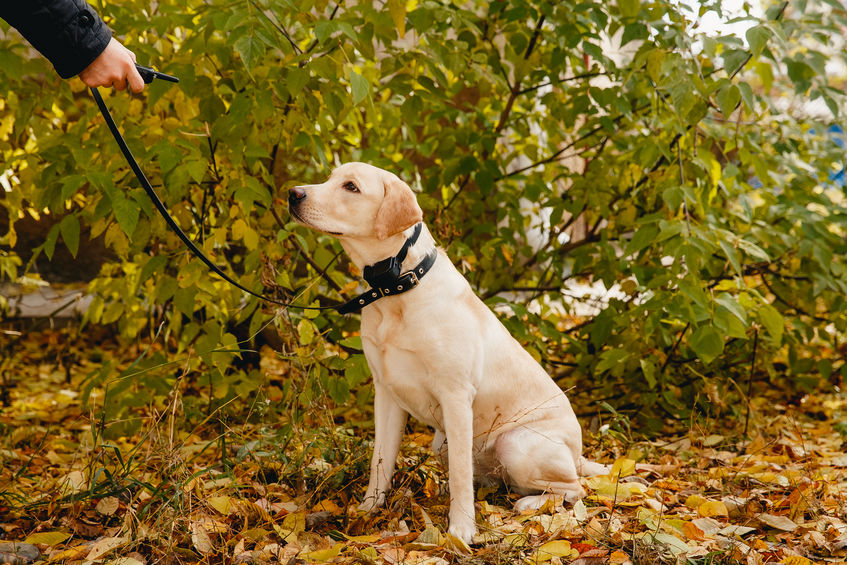[Episode 23]
Is positive reinforcement the most effective way to train your dog?
Is positive reinforcement more effective than punishment?
Science shows that in order to effectively change behavior, there has to be some motivation for the change. There are 2 main things that motivate change, pain and pleasure. Most dog owners don’t realize that these are only two ways to train a dog and they select the painful method.
Unfortunately, the old way of training dogs falls into using punishment. For some reason, we as humans tend to want to punish behavior instead of reinforcing it.
So the question today is what is more effective: punishing behavior or reinforcing it.
Years ago I was at a friend’s house for dinner with her 9 year old. On the hutch next to the dining table a dry erase board with a calendar on it. On the calendar were sad faces on certain days on the calendar. I asked my friend, what do sad faces mean? She looked at her daughter and said, those are the days Nicole got in trouble for talking at school. I looked at Nicole and she looked down, ashamed. My friend went on to say she was keeping track of the bad days so that Nicole could be better each week, but from the looks of the calendar, it didn’t look like it was working because there were several sad faces. I hugged Nicole and told her I talked a lot in school too. I asked my friend if we could try a different way to track progress. I grabbed the pen and filled in the blank spaces with happy faces since these were the days Nicole was “good” in school or she didn’t talk in class. Once I had filled in all the happy faces, I erased the sad faces. There were 2 weeks left in the month, so I said, lets see how many happy faces Nicole can get.
A week later, I get a call from Nicoles mom. She was super excited and taking Nicole out for ice-cream because she got all happy faces.
I got a call the week after that too, more happy faces.
A month later they didn’t need the calendar because Nicole was doing better and her behavior changed.
The moral of the story is the contrary to what most people think, positive reinforcement influences behavior with speed and enthusiasm. Nicole was excited to put a happy face on the calendar instead of ashamed, which inspired her to get more happy faces.
Training your dog is very similar to this story.
In order to understand which method is more effective you have to understand learning theory, which is science, or more specifically what do reinforcement and punishment mean.
What is positive reinforcement:
There are 2 types of reinforcement, positive reinforcement and negative reinforcement. The word reinforcement means to strengthen. If you lived in a one story house and you wanted to add a second story, you would have to reinforce or strengthen the first story, right?
Positive reinforcement means to add someone to strengthen behavior. Add a piece of food to strengthen the behavior or get your dog to do it again.
Negative reinforcement means to remove something to strengthen behavior. Many shock collar trainers will remove the shock when the dog lies down. The pain of the shock stops to strengthen the Down behavior. Another common negative reinforcement technique is when someone has a choke chain on the dog and they pull up so the chain tightens around the dog’s neck. Once the dog sits, the tightened collar is removed. In other words, once the dog does a behavior the pressure or pain is removed. Removing pain to strengthen the sit. I don’t recommend using negative reinforcement.
What is punishment?
Punishment means to stop or decrease a behavior. Positive means to add something, to stop or decrease a behavior. Positive punishment means you’re adding something to stop or decrease a behavior. If you’re adding a shock to get your dog to stop barking and he stops, then you’ve used positive punishment. If you give your dog a little kick, which we’ve all seen on the big “popular” TV shows, or using poke to stop a behavior, you’ve just added something, the kick or the poke to stop a behavior. That means you’re using positive punishment to train your dog.
If you alpha roll your dog, to get him to stop growling and lunging, you’ve just used positive punishment. You’ve added something to stop a behavior.
What is negative punishment?
Negative punishment is when you remove something to stop a behavior. Negative punishment means you remove something, to stop a behavior. So a good example of this would be if your dog is barking at you to hurry up and give him breakfast and you stop and walk out of the room and he stops barking. You’ve just used negative reinforcement by walking away. You removed yourself to stop or decrease the barking behavior.
This process is scientific and is called learning theory. It’s part of operant conditioning discovered by BF Skinner.
There are many dog trainers that will use shock collar and prong collars (positive punishment and negative reinforcement) to train dogs. They will say they’re following the science. Just because you have a scientific cause and effect doesn’t mean its ethical. Additionally, dog’s also learn by association. We call this scientific process classical conditioning. This is how your dog forms fears and emotions.
Using positive punishing and negative reinforcement has side effects. Dr. Meghan Herron did a research study to determine which was more effective to train dogs, positive reinforcement or positive punishment. She found that confrontational methods caused a more aggressive response from the dog. In fact, she found a 43% and 26% increase in aggressive responses when dogs were training using positive punishment. In other words using those methods increased and created aggression. She also found that where these dogs had not had any aggressive responses, they started to respond aggressively when these methods were used.
In a different study, half of the dogs were trained with and e-collar (shock collars) and half of the dogs were trained using positive reinforcement.
The scientists say,
“These findings refute the suggestion that training with an E-collar is either more efficient or results in less disobedience, even in the hands of experienced trainers. In many ways, training with positive reinforcement was found to be more effective at addressing the target behavior as well as general obedience training. This method of training also poses fewer risks to dog welfare and quality of the human-dog relationship. Given these results we suggest that there is no evidence to indicate that E-collar training is necessary, even for its most widely cited indication.”
These two groups in the study taught two behaviors in five days. One group used and e-collar (shock collar) and one group used positive reinforcement. They found that the dogs that were trained using positive reinforcement actually responded faster and more effectively based on how many times you had to give the cue or command.
So for example, the positive reinforcement cue responded more often. The first time you would say, sit then the shop color group. So the science suggests that the reward based training was the most effective approach. Not only for recall, they did it for recall as well, which was the targeted behavior and training, but also for other commands, even though the reward-based trainers didn’t spend as much of their time training on sick command as the other two training groups.
“..the training with positive reinforcement was found to be more effective at addressing the target behavior as well as general obedience.”
So there you have it, there is actual science to help you determine which is more effective using punishment or using positive reinforcement.
Now that you know the fact you have a decision to make, do you want to use the method that is more effective and has less side effects, or not?
If you’re struggling with your dog, then we want to help you. Check out our FREE Dog Training Masterclass and see which program, The Dog Academy or the Barkaholics, can help your dog listen better.
Follow us on Instagram to see our daily training lessons. You’ll learn a lot and get a dog that listens.


FREE MASTERCLASS
3 STEPS TO GET YOUR DOG TO LISTEN
Most struggling dog owners spend hours watching videos and reading blog posts that don’t address the cause of their problem. They waste time focusing on the symptoms and then think their dog is difficult or can’t change when they don’t see results. If you’re ready to finally see change, then sign up and watch this FREE Masterclass.


